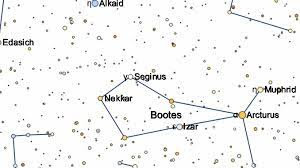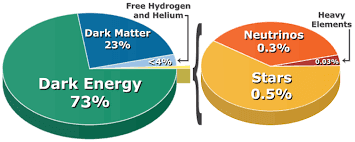 By now you know that Donald Trump won the New Hampshire Republican primary by double digits, an unimpressive "only" 11%. The way the upcoming primaries are shaping up, Nikki Haley has no chance of overtaking Trump, and, as I detailed yesterday, the best hope for any kind of Republican victory is for Trump to embrace Haley as his vice-presidential running mate. It was mostly a waste of time and effort for Democrats, but Joe Biden also won, easily, through a write-in campaign.
By now you know that Donald Trump won the New Hampshire Republican primary by double digits, an unimpressive "only" 11%. The way the upcoming primaries are shaping up, Nikki Haley has no chance of overtaking Trump, and, as I detailed yesterday, the best hope for any kind of Republican victory is for Trump to embrace Haley as his vice-presidential running mate. It was mostly a waste of time and effort for Democrats, but Joe Biden also won, easily, through a write-in campaign.Last week Wednesday, I compared the two scientific journals most respected by researchers and academia. From Quora:
But iLovePhD shows that #2 is not Science, but The New England Journal of Medicine, which is fine for the medical profession. I thought the Journal of the American Medical Association would be higher rated, but it is only at #11.
Last week, FeedSpot listed its 45 Best Science Magazines.
- Science is #1.
- Scientific American #2.
- Discover Magazine #5.
- Popular Science Magazine #7.
- Popular Mechanics Magazine #16.
- National Geographic #29.
- Time Magazine #34.
So today, I will focus on the monthly Scientific American, a publication I have subscribed to now for several decades.
- I would describe this magazine as difficult for most.
- More than 150 Novel Prize winners have contributed articles.
- Charles Darwin published On the Origin of the Species in 1859, and had an article on this subject in this magazine.
- The Wright Brothers published their experiments here in 1902. Their first official flight was at Kitty Hawk, North Carolina in 1903.
- In print since 1845, it is the oldest continuously published magazine in the USA!
- The very first issue: August 28, 1845 Vol.1, No.1, when it was a weekly. Turned monthly in 1921.
- In the early years, the emphasis was on what was going on at the U.S. Patent Office.

- Reported was a buoying vessel in 1860 by Abraham Lincoln.
- There has always been a small amount of humor at the end of each issue.
- The magazine fell into decline after World War II, and was saved in 1948.
- There was some internationalization in 1905, but that was suspended until 1968 with the launching an Italian edition.
- In 1979, became the first Western magazine published in China, experiencing turmoil.
- There are now 17 foreign-language editions.
- Purchased by Holtzbrinck Publishing Group of Germany in 1986.
- In 2009 it notified collegiate libraries that the yearly subscription price would increase by nearly 500% for print and 50% for online access, bringing the annual cost up to $1500.
- Has only had 9 editors-in-chief, so the average tenure has been 20 years. Laura Helmuth assumed this role in 2020.
- In 2020, the magazine endorsed Joe Biden for president, citing Donald Trump's rejection of science. First time in history for them, and 1845 was 175 years ago. Nature, that most prestigious UK journal, did, too. Most of the most respected journals have also now done this, worried about Donald Trump.
Let me scan through the January 2024 issue.
- Shi En Kim: Heads or Tails? 50-50, right? Wrong. In 2007 Persi Diaconis of Stanford University predicted that a coin flip is biased by the circumstances, and the result is usually 51% vs 49%. Crazy, right? Wrong. More thorough experiments showed the difference was closer to 50.8% to 49.2%. I could try to more scientifically explain why, but if you are so interested, go look it up yourself.
- Riley Black: Prehistoric dinosaurs and other animals were all grayish-tannish, right? Wrong. Many were downright colorful. Research is just beginning, but the following could well be proven some day.
- Lori Youmshajekian: The James Webb Space Telescope captured this image of how stars form. Only a few thousands years old, stars take millions of years to form. You need to read the details to better understand what exactly in happening here, but each color shows something significant.
At a distance of 545 light years from us in the constellation of Boötes is a dwarf star around 85% the mass of our Sun.
- Circling is a giant exoplanet called TOI-1853b in a 1.24 day orbit.
- Has a radius about the size of Neptune, 3.5 times larger than Earth, but a mass 75 times our globe. The density is that of steel.
In the vicinity of Boötes constellation is something called the Boötes Void, known as the Great Nothing, a spherical region of space which contains nothing.
- Well, what's the big deal about that?
- For one, this globe of space is 330 million light-years in diameter. So what?
- If you shine a light from one end of our Milky Way Galaxy, it would take 100,000 years to cross to the other side. You know how long that is?
- 10,000 years ago, we discovered agriculture.
- You need to live ten times longer to reach 100,000 years.
- 330 million light years is 3300 times longer than 100,000 years.
- Or, the size of this space void has a diameter 3300 times larger than our Milky Way Galaxy.
To be clear, a cosmic void does not have nothing. Some learn better by watching video. Here is one.
- The emptiest still contains more than 15% of the average density of our Universe.
- Voids are believed to have been formed by baryon acoustic oscillations in the Big Bang...whatever that means.
- Why they are important:
- 90% of outer space is composed of cosmic voids.
- The answer to what is dark energy will be solved here.
- And if you don't know what dark energy is, you are in good company. No one does. There is a sense that dark energy is 70% of the total energy in the Universe. And don't ask about Dark Matter. But below is the unknown reality.
- I was trying to avoid this, but will include one Scientific American article, by Michael Lemonick on How Analyzing Cosmic Nothing Might Explain Everything.
- The case against taking supplements, like for Vitamin D.
- The matter of depression, and how prevention is the best solution.
- The LGBTQ+ alphabet is increasing as the world liberalizes. There is also asexuality, or not interested in sex. While you might have seen polls indicating that only 1% of us are asexual, chances are that this figure is much higher, as this 1.7% finding, with 86% being female.
- Next, something to do with the einstein tile, which means in German, one stone, having nothing to do with Albert. Various 13-sided tiles seemed likely. Apparently, the perfect einstein tile has been found, and it looks relatively simple.
- Thoughts on why cats are perfect, let NASA dream with adequate budget, avoiding the Martingale betting strategy, considering the Kelly criterion, a poem on Baby Crocodile and a graph of the cells in your body by size, following Zipf's Law. Did you know that an egg cell is the largest cell in the body, while sperms are the smallest, about the same size as red blood cells. We all have around 25 billion red blood corpuscles.
- Finally, a science agenda on climate reparations, what we learned from acid rain and stepping off the BMI Scale, that is, this age-old index is being discarded for a more thorough body analysis not yet developed to be given a name.
An ending note of sorts about a science publication many of us grew up with, Popular Science. Wonder why you don't see it on the magazine rack anymore? First published in 1872, after 150 years, they went electronic, and stopped printing physical copies in 2023. Their digital issue costs $5.99/issue and $49.99/year.
One final bit of news. the Bulletin of the Atomic Scientists yesterday kept their Doomsday Clock at 90 seconds to midnight, but warned that humanity is as close as ever to destruction for five reasons: the war in Ukraine, the Israel-Hamas war, Russia's withdrawal from any arms agreement, the record-breaking heat of 2023 and the threat of artificial intelligence.
-



























Comments
Post a Comment